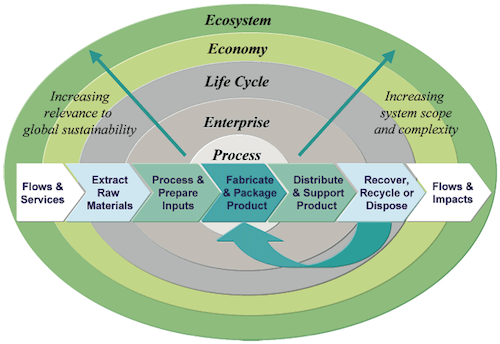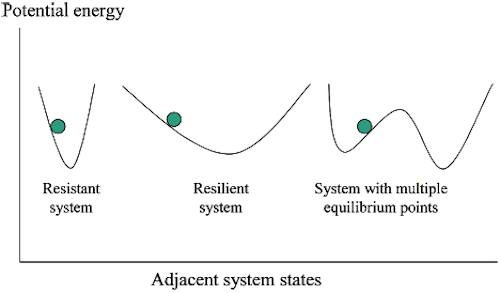Resilient and Sustainable Systems
In today’s post I would like to highlight how the concepts of resilience and sustainability can be aligned.
Resilience is often interpreted as a property of a supply chain most often associated in a risk management sense; sustainability on the other hand, usually refers more to social and environmental goal orientation. So how can these concepts be aligned?
You can download a copy of the full article by Joseph Fiksel Designing Resilient, Sustainable Systems.
Sustainability
Nowadays shareholders show more and more interest in the ecological and social footprint of their company, therefore companies aspire to become more sustainable.
Fiksel defines sustainability as:
A product, process, or service contributes to sustainability if it constrains environmental resource consumption and waste generation to an acceptable level, supports the satisfaction of important human needs, and provides enduring economic value to the business enterprise.
Sustainability therefore is not an objective (which could be put into a mathematical model) but a property of a system.
For a supply chain system the analysis starts at the process level up to the an economy and ecosystem (see figure 1).

Sustainable companies
The author points out a study which has been conducted by Royal Dutch Shell in the 90s to find properties of long-lived companies. They unveiled the following factors:
- sensitivity and adaptability to the business environment
- cohesion and sense of identity
- tolerance of diversity (decentralization)
- conservative use of capital
Interestingly, profitability was seen rather as an outcome of these factors than a good prediction for long life. The study concludes that learning, growing and long term survival should be the goal; and these objectives cannot be reached by simply maximizing profits.
Resilience vs. sustainability
First, resilience can be best described using the diagram in figure 2.
- A resistant system returns to its desired / stable state very fast, however if the system state is moved too far of the original state (in the diagram too far left or right) it may collapse and not be able to return.
- A resilient system has a broader range of possible states, and therefore can survive larger disruptions.
- The last system is an extension of the resilient system, and able to withstand even larger changes in the environment, maybe changing its equilibrium point.

Resilience in systems design
Fiksel suggests four system characteristics which can be / are used on different system levels to increase resilience of that system:
- Diversity, existence of multiple forms and behaviors;
- Efficiency, performance with modest resource consumption;
- Adaptability, flexibility to change in response to new pressures;
- Cohesion, existence of unifying forces or linkages.
Figure 3 contains supporting examples.
Conclusion
The author introduces a system theory framework, where sustainability and resilience are properties of the system. From the title and introduction I was expecting a more systematic approach in comparing these two concepts and defining their relationship.
There is one direct quote (“Perhaps the essence of sustainability is resilience, the ability to resist disorder.”) indicating that resilience might be the more general term, but it is not confirmed.
There are of course some overlaps mentioned, e.g. efficiency as a mean to improve resilience, which works towards a sustainable system. But there is no direct comparison between the two.
The author also introduces a process to design sustainable systems. If interested please download the paper and have a look at page 5335.
Fiksel, J. (2003). Designing Resilient, Sustainable Systems Environmental Science & Technology, 37 (23), 5330-5339 DOI: 10.1021/es0344819









Add new comment